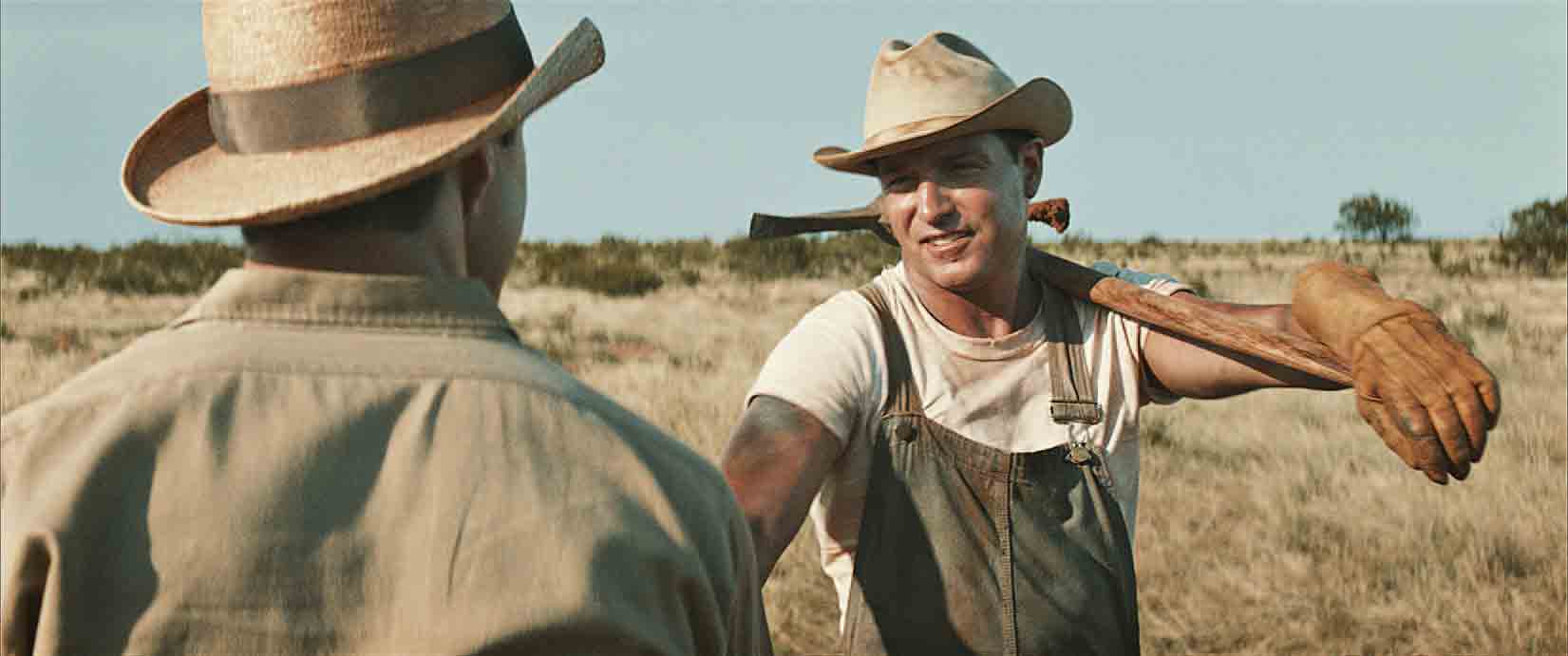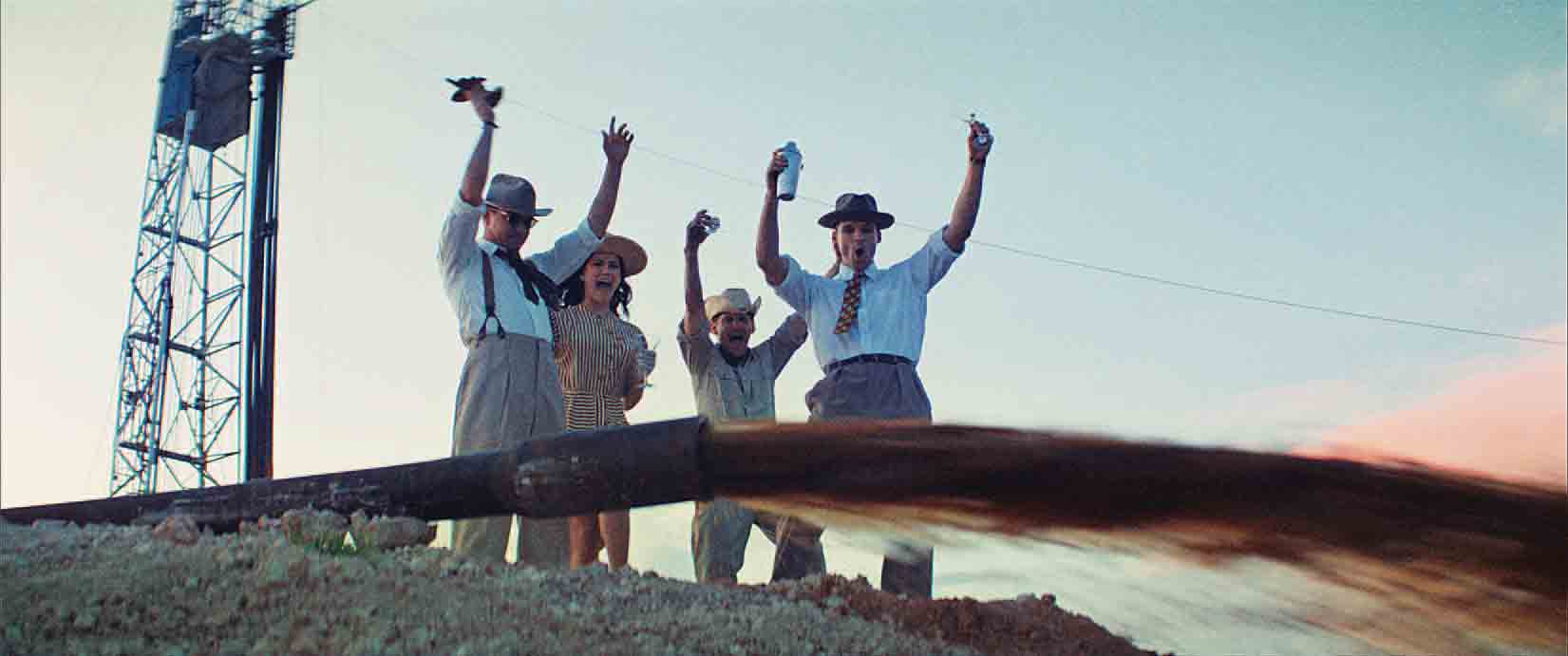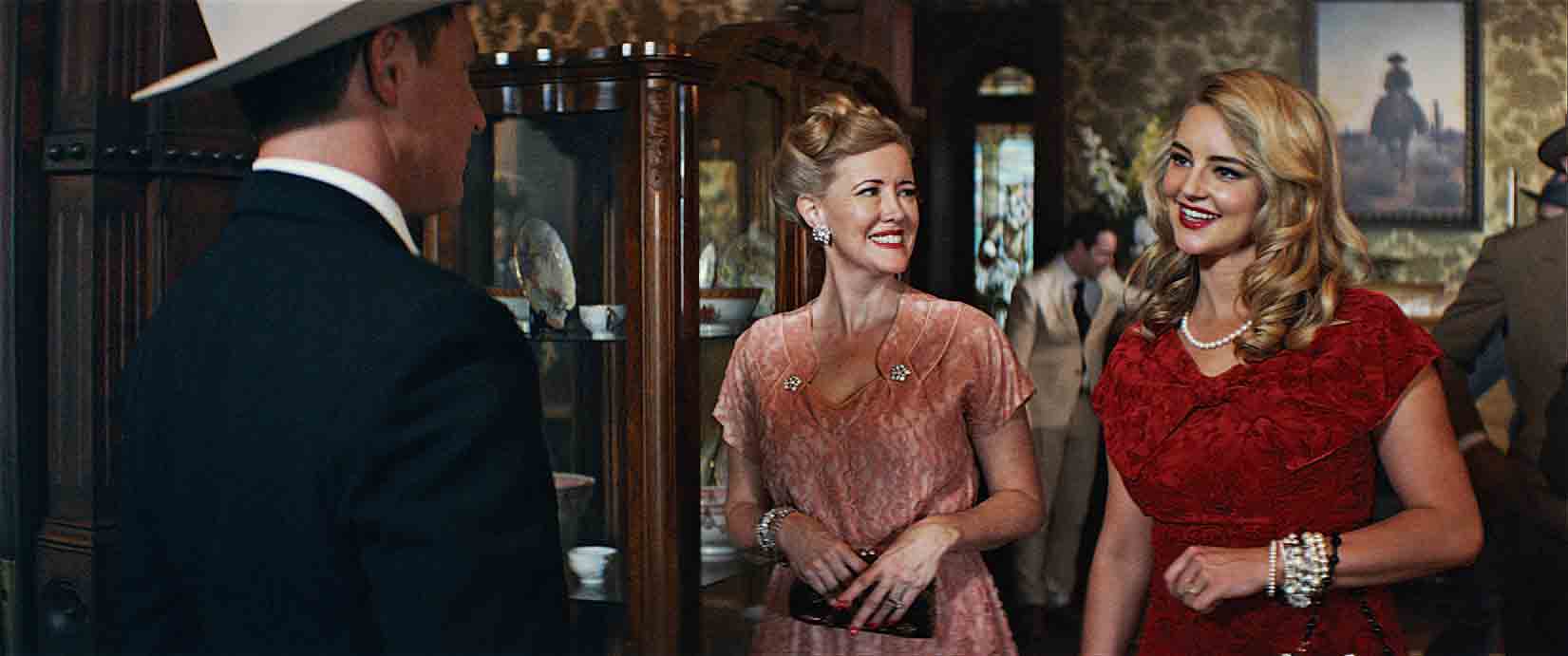Director Ty Roberts’ new indie movie adapts an intense drama about mid‑20th century Texas oilmen.
It’s a proud moment for wildcatter Jim McNeely, the triumphant payoff for years of striving and struggling in the oil patches of 1940s Texas. As a gusher of black gold erupts from the earth, showering his drilling rig and the ground around it, he excitedly embraces his wife, then casts another awestruck glance at what he immediately recognizes as a life-changing event. He exclaims: “We’re in the oil business now, sugar!” And then, as though mesmerized, he starts to walk toward the gusher.
“Yeah, I wanted to bathe in that oil,” says actor Lane Garrison, recalling this exhilarating scene from The Iron Orchard, the independently produced film in which he plays McNeely. “I wanted to bow my chest up and swagger right into it.
“But then,” he adds with a laugh, “I remembered that the wardrobe people told me they’d absolutely kill me if I did anything like that — because the hat I was wearing was a $1,200 rental.”
An exceptional set-in-Texas drama in the Giant tradition, brimming with fine performances and evocative period details, The Iron Orchard is the end product of a long process that, not unlike McNeely’s fictional struggle, involved the pinching of pennies and the kindness of strangers. Actor turned director Ty Roberts spent the better part of a decade rewriting scripts and raising funds for his labor of love before shooting began in Midland, Odessa, Austin, and other Texas locales during the summer of 2017. (That gusher scene, by the way, was accomplished with a substitute consisting of water, food dye, and vegetable oil.) He couldn’t have completed the movie, he admits, without the help of local businesses in communities where he filmed — hotel rooms were provided, public and private buildings were made available for shooting interior scenes — and the enthusiastic support of real-life Texas oilmen with reverent regard for the novel on which the movie is based.

Published in 1966, The Iron Orchard is a richly detailed, decades-spanning narrative that paints a not entirely flattering portrait of Jim McNeely in particular and mid-20th century Texas oilmen in general. It’s credited to Tom Pendleton, but never mind: That’s actually the nom de plume of the late Edmund Pendleton Van Zandt Jr., the scion of a prominent Fort Worth family with centuries-old Texas ties. “My great-great-grandfather was secretary of state of the Republic of Texas,” says actor Ned Van Zandt, the author’s son, who plays a major supporting role in the movie adaptation. (And yes, before you ask: Ned is a cousin of legendary Texas singer-songwriter Townes Van Zandt.) “My great-grandfather was one of the founders of Fort Worth, Texas, and a major in the Confederate Army. You go to Fort Worth, and our names are on the plaques.”
His father wrote The Iron Orchard “under a pseudonym because he thought people would hate it. Really, he was afraid of offending the people of Fort Worth, the powers that be in Fort Worth. He was kind of a shy guy anyway, but that was really it. He worked for the family bank, he dealt with oilmen, but he had to get this out. I think he was quite surprised when the book was received as well as it was.”
Ned Van Zandt joined fellow Texans Ty Roberts (a Midland native now based in Austin) and Lane Garrison (who was raised in Richardson) to talk with Cowboys & Indians hours after last spring’s standing-room-only world premiere screening of The Iron Orchard at the Dallas International Film Festival. The movie is slated to kick off its theatrical run February 22. Here are some highlights from our conversation, edited for length and clarity.

Cowboys & Indians: Even though you didn’t have a zillion-dollar budget, the production values for The Iron Orchard are impressive across the board. Which makes me wonder: Is it easier to do a period film on a limited budget in certain parts of the country than in others, because more people save more things there? Like, “Oh, yes, my aunt still has that kitchen set,” or whatever?
Ty Roberts: Or that ’49 Cadillac? Yeah, that made it a lot easier. Like, the car collectors out in West Texas were incredible, because these guys made money in the oil fields, so they collect cars — and they have old cool stuff, you know? They honor and love that timeless stuff. Or you can go into some parts of downtown Big Spring in Texas, and you just point your camera in the right direction — and you’re still in that timeless ’30s, ’40s, and ’50s. And we even had oil rigs that were originally designed in the ’40s — a couple of drillers out there still used them, and everyone was very excited to be part of a movie, you know?
Lane Garrison: But even with all that, it’s still hard on an indie budget to pull off a period piece. When I showed the movie to my managers and people like that in L.A., they’d go, “How did you do that? How did you do a period piece on that budget, and get it right, and do it right?” Because they knew the budget. That, I think, was the most difficult thing, from the wardrobe to the cars to the hats.
Roberts: [Laughs.] It was a small crew, you know? We didn’t have the resources to have a multitude of wardrobe folks. So Lane was doing changes for three different decades within a few hours.
Garrison: That was the craziest part. I’d throw on a fat suit, and I’d be playing Jim McNeely toward the end of the film, and then immediately I’m playing him as a college-age guy. They’re parting my hair while they’re taking grease off me — while it’s, like, 114 degrees. And I felt like I was doing a one-man show in vaudeville. The funniest thing is we’d all have to fact-check: “Just how old is he here?”
Roberts: “Gray in his eyebrows? Yes? No? Yes?”

C&I: When I researched an article I did for our magazine about the 50th anniversary of Giant, I was a little surprised to discover that, back in the day, many people in Texas actually despised the Edna Ferber novel on which the film was based. You didn’t have that problem, did you? Because this novel actually was embraced by Texans.
Roberts: It’s almost like a bible of lost Texas. I mean, we would talk to guys in the oil business, and they would bring you into their office, and they’d be like, “I know it, because it’s my favorite book.” And it’d be sitting on their desk, or up in their bookshelf. And you know how hard it is to track down a copy of that book now?
Ned Van Zandt: I think first editions are on eBay for, like, $3,000 now.
Roberts: And it’s crazy, because you’d think a lot of oil people wouldn’t embrace it. Sometimes, when we talked to people about making the movie, they’d ask, “Does it portray the oil business in a bad way?” And I’d say, “Did you read the book?” “Yeah.” “Well then — it’s the book. It does not necessarily portray the old ways in a good way.” So it’d be like, they’re asking their questions — but they love the book anyway. I think because it’s so real. It’s so true to its characters.
Garrison: I had a guy come up to me — a big oilman, a bigwig — and he said that, back in the day, he was living like Jim McNeely, and then someone gave him that book. And he goes, “I got sober the day I reached the last page of the book. I realized that I was Jim McNeely, and I was gonna die of alcoholism or something else, or a rig that was going to explode. It changed my life.”
C&I: There have been several other attempts to film The Iron Orchard since it was published in 1966, right?
Van Zandt: The book was optioned probably six or seven times, from 1967 on. Paul Newman was attached at one time. The closest it came to being made was when George Peppard and Samantha Eggar were gonna do it. But that script was terrible.
Roberts: You know, your dad talked about that in the book, about Santa Rita, and that notion of luck. And I feel like with this movie — it’s like everything came together, and it was a timely thing. There were so many coincidences involved where we’d all just be like, “That’s Santa Rita.” Like, it just must be time to make this movie, in this time frame. With these people.
Garrison: The biggest thing with this film, I think, is that we couldn’t have done it anywhere else other than West Texas. Literally. That’s not an exaggeration. I mean, you can’t believe what the guys there gave us. To move an oil rig, that’s 150 grand. To move it back, it’s 150 grand. That’s $300,000. But the oil guys there were like, “Don’t worry about it, we’ll move it over here, and then we’ll move it back.” They were drilling a well, and they stopped drilling, and they were like, “It’s fine, shut it down.” They’re about to hit pay dirt, and they shut it down for us and let us shoot. And they said, “By the way, y’all can use our workers.” And it was just like, “What? This is crazy.” But that’s what happened.
EDITOR’S NOTE: The Iron Orchard is a multiple-nominee for the third annual C&I Movie Awards. You can cast your ballot for the awards here.
Photography: (all images) Mathieu Plainfosse/Courtesy Santa Rita Film Company.
From the February/March 2019 issue.














